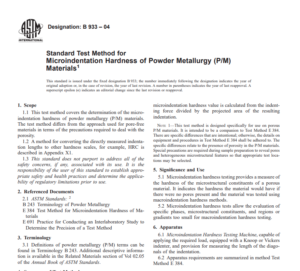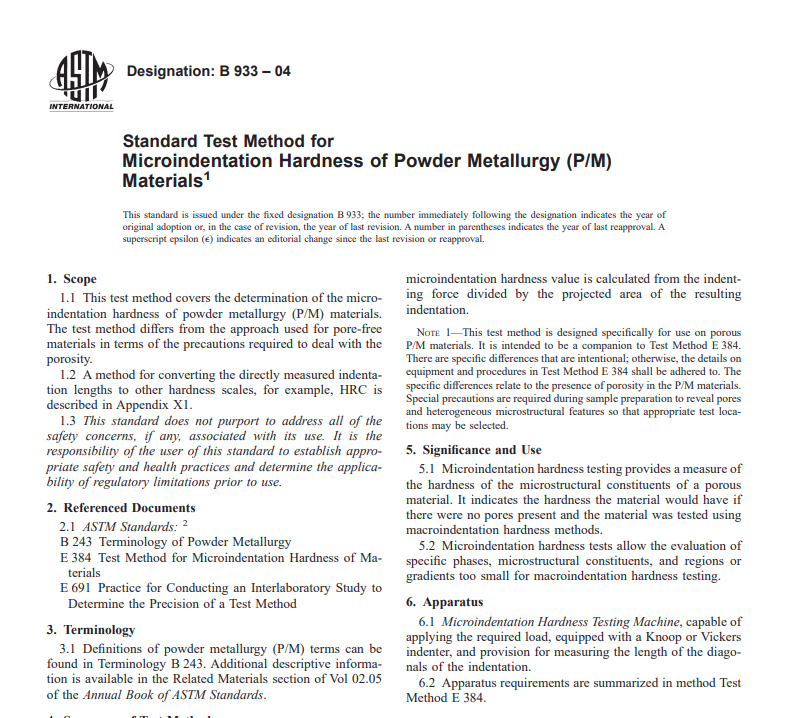Standard Test Method for
Microindentation Hardness of Powder Metallurgy (P/M)
Materials1
This standard is issued under the fixed designation B 933; the number immediately following the designation indicates the year of
original adoption or, in the case of revision, the year of last revision. A number in parentheses indicates the year of last reapproval. A
superscript epsilon (e) indicates an editorial change since the last revision or reapproval.

1. Scope
1.1 This test method covers the determination of the microindentation hardness of powder metallurgy (P/M) materials.
The test method differs from the approach used for pore-free
materials in terms of the precautions required to deal with the
porosity.
1.2 A method for converting the directly measured indentation lengths to other hardness scales, for example, HRC is
described in Appendix X1.
1.3 This standard does not purport to address all of the
safety concerns, if any, associated with its use. It is the
responsibility of the user of this standard to establish appropriate safety and health practices and determine the applicability of regulatory limitations prior to use.
2. Referenced Documents
2.1 ASTM Standards: 2
B 243 Terminology of Powder Metallurgy
E 384 Test Method for Microindentation Hardness of Materials
E 691 Practice for Conducting an Interlaboratory Study to
Determine the Precision of a Test Method
3. Terminology
3.1 Definitions of powder metallurgy (P/M) terms can be
found in Terminology B 243. Additional descriptive information is available in the Related Materials section of Vol 02.05
of the Annual Book of ASTM Standards.
4. Summary of Test Method
4.1 Micro indentation hardness testing uses a calibrated
machine to force a pyramidal-pointed diamond indenter into
the surface of the test material under a known test load. The
microindentation hardness value is calculated from the indenting force divided by the projected area of the resulting
indentation.
NOTE 1—This test method is designed specifically for use on porous
P/M materials. It is intended to be a companion to Test Method E 384.
There are specific differences that are intentional; otherwise, the details on
equipment and procedures in Test Method E 384 shall be adhered to.
The specific differences relate to the presence of porosity in the P/M materials.
Special precautions are required during sample preparation to reveal pores
and heterogeneous microstructural features so that appropriate test location may be selected
Click below to download Astm B 933 – 04 Pdf free
[wpdm_package id=’6174′]
Click here to Astm B 932 – 04 Pdf free download
